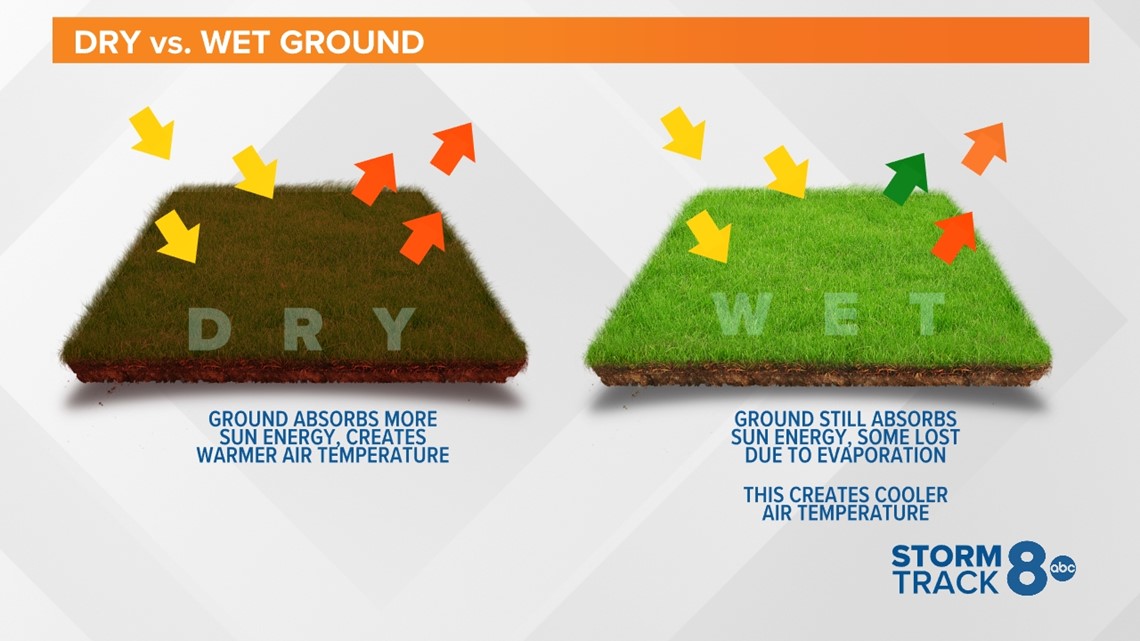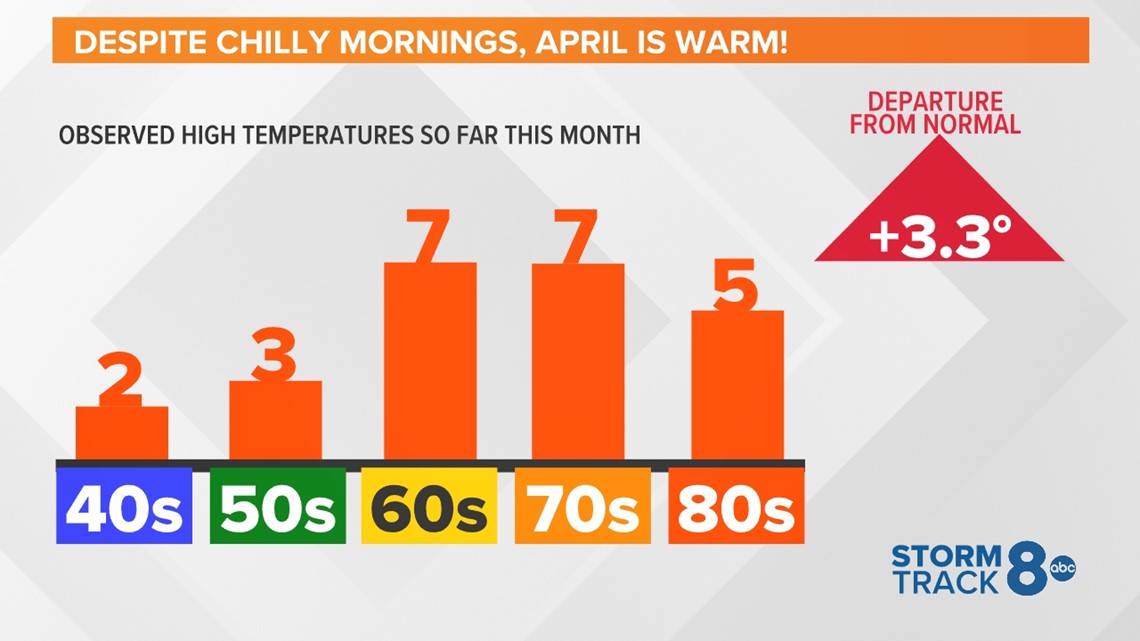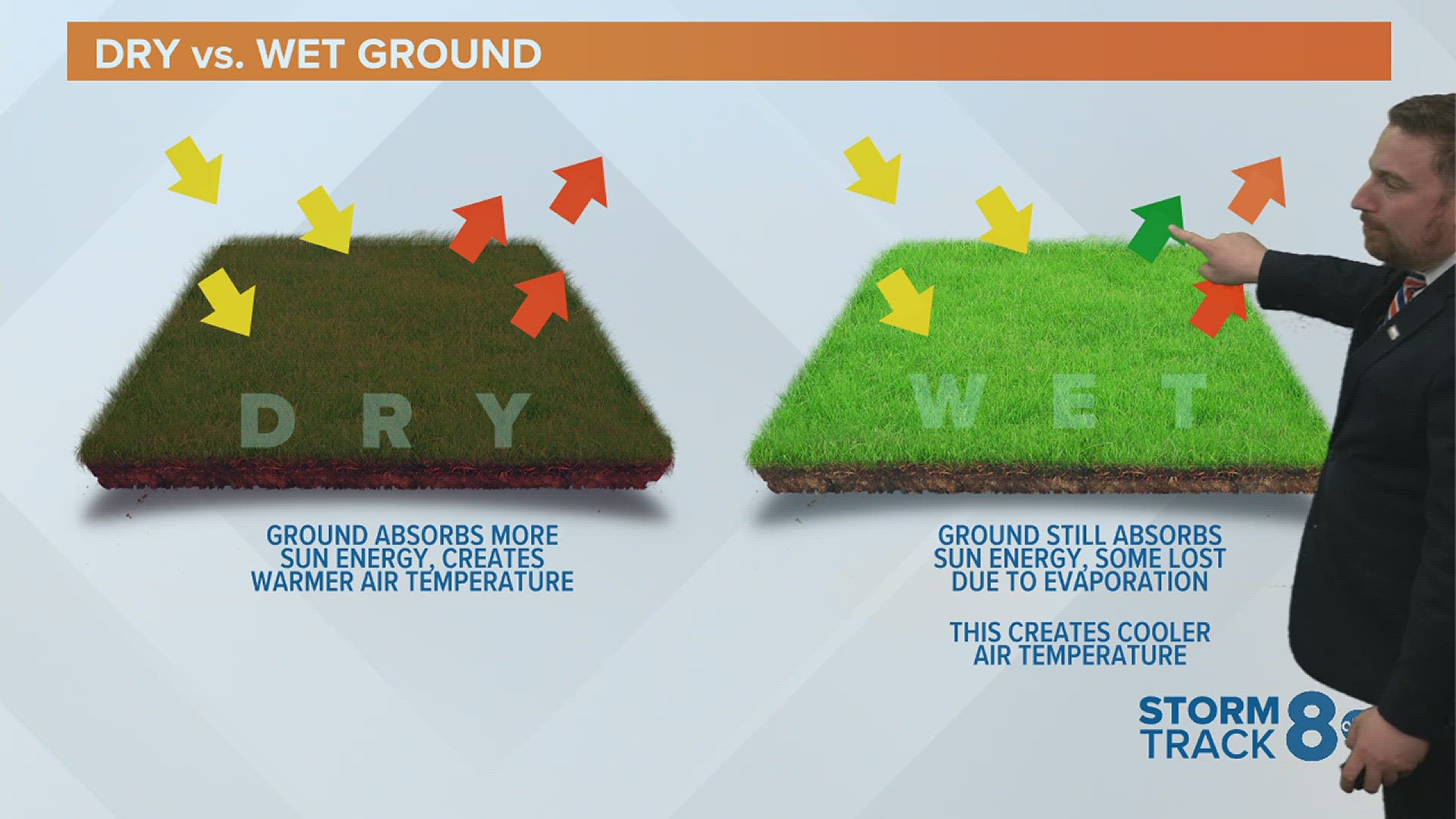MOLINE, Ill. — The Mississippi River continues to rise here in the Quad Cities and the surrounding region, becoming wider as it floods surrounding land that isn't protected by flood walls or other preventative measures. The perfect opportunity to tackle the following question:
I heard that in the spring when the water is high causing flooding, that is the reason for the temperatures to be cooler, and when the flood waters go down, that's when it gets warmer. Is this true?
It's a great question! We know that large bodies of water can absolutely have an impact on temperature. However, the Mississippi River really isn't large enough, even when going through major flooding like it is right now, to create a significant impact on temperatures overall.
It can create what we can a "microclimate," in that yes, temperatures directly above the water will likely be cooler, especially on a day that features very little wind. However, that's about the extent of its impacts.
What has more of an impact on temperature is the condition of the ground, soil specifically.
During years of drought, dry soil absorbs incoming energy from the sun a lot more effectively. It also radiates more heat energy back into the surrounding air, creating warmer temperatures. That's why the most significant heat waves will occur in times of dry weather, or severe drought conditions.


On the flip side, wet ground gets more complicated. The energy from the sun still gets absorbed by the ground, but that energy also has to work towards evaporating the water contained in the soil. This leaves less heat energy to be transferred back into the surrounding air and in turn, a cooler temperature pattern.


Put it all together and it does make some sense. When you have a wet spring featuring a lot of rain and river flooding, the two go hand-in-hand. However, this April, which has been drier than normal, has less of a correlation with the temperature pattern and the data shows. As of April 26, the average monthly temperature is 3.3° warmer than normal, despite some really chilly nights!
Have a question you would like me to answer for an upcoming Ask Andrew segment? Submit it, here!
Watch more "Ask Andrew" segments on News 8's YouTube channel

